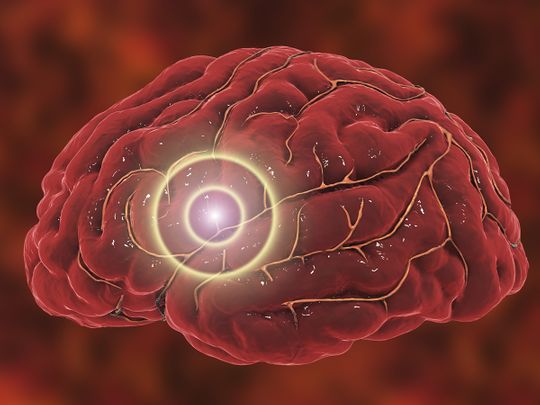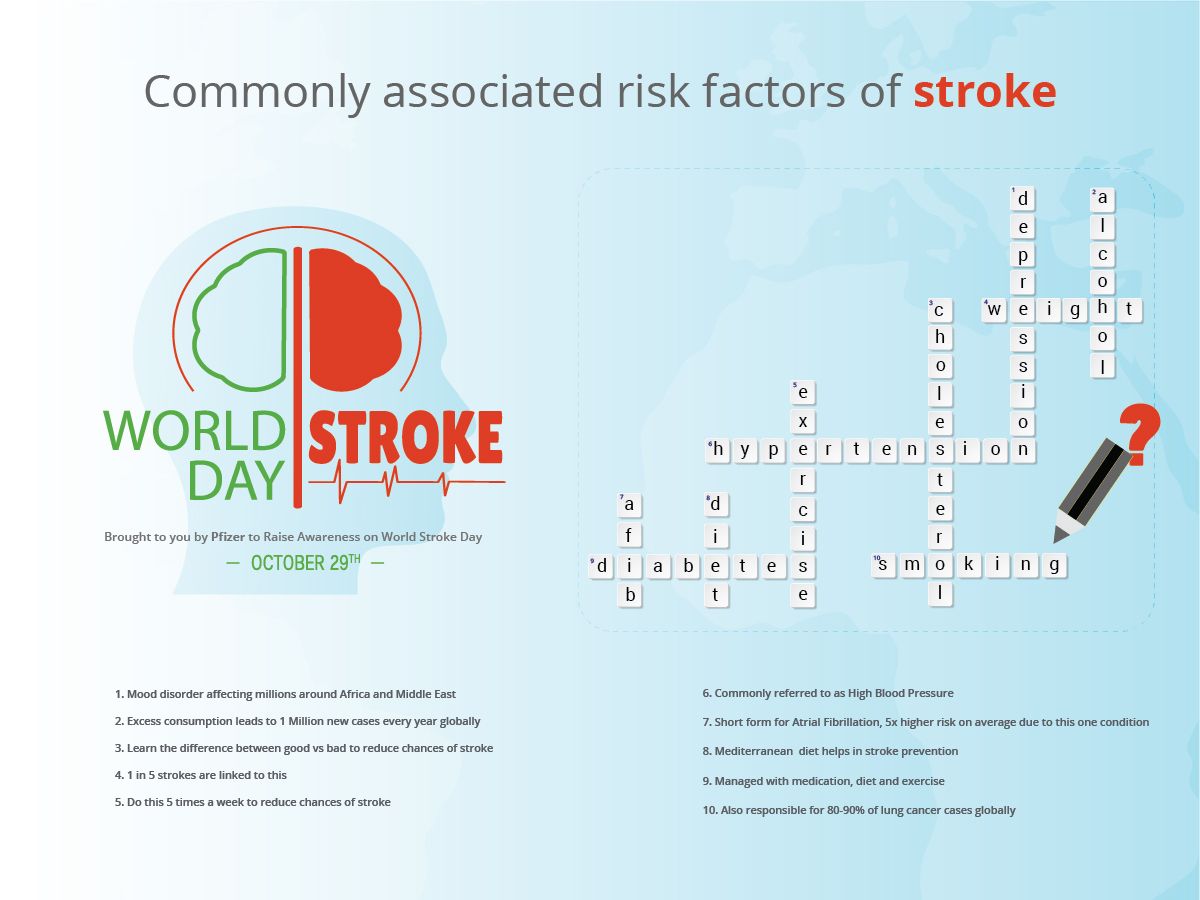
World Stroke Day is observed on October 29 every year to mark the severe nature of stroke, the high rates of incidence, and raise awareness of prevention and treatment. Being ranked as the second-leading cause of death worldwide and with an annual mortality rate of about 5.5 million, stroke is a condition with severe economic and social implications. A stroke is when the blood supply to the brain is suddenly interrupted, usually because a blood vessel bursts (hemorrhagic stroke) or is blocked by a clot (ischemic stroke). As a result, this damages the brain tissue due to the lack of oxygen and nutrients.
Prevention is key to reducing the risk of suffering a stroke.
While there is awareness to some degree around common factors like smoking and hypertension, there is low awareness of other factors, such as weight gain and atrial fibrillation.
Here we look at the commonly associated risk factors of stroke and how to prevent them.
High blood pressure, or hypertension
Hypertension is a severe medical condition that can increase the risk of stroke. If left untreated, it gets worse and progresses to more severe stages. Hypertension can occur at any age but more frequently in older people. More than two-thirds of people aged above 60 have hypertension.
Diet
There is growing evidence that one of the best diets for stroke prevention is the Mediterranean diet, which is known to maintain weight, reduce cholesterol and blood pressure, thereby reducing stroke risk. The diet is popular in several parts of our region.
Atrial Fibrillation (AFib)
Atrial Fibrillation (AFib) is a common heart condition that causes an irregular heart rhythm (arrhythmia). The currently estimated global prevalence of AFib in adults is between 2 per cent and 4 per cent. AFib can induce the formation of blood clots and is therefore associated with a high number of complications. Among these, what is defined as an embolic stroke, a type of stroke that occurs when a blood clot forms elsewhere in the body breaks loose and travels to the brain via the bloodstream, is undoubtedly the main one.

The risk of stroke increases by almost five-fold in patients suffering from AFib. Clinicians often think of AFib as a silent condition, as it has no symptoms to alert patients of its presence. As a result, this dangerous condition often goes unnoticed, remaining undiagnosed and untreated. Prevention is key to reducing the risk of stroke in AFib patients. Today, there are different treatments available to reduce stroke risk in patients with AFib that is not caused by a heart valve problem, also known as non-valvular AFib. The most common treatment prescribed by doctors is anticoagulants, which prevent blood clots from forming, potentially leading to a stroke.
Exercise
According to the World Stroke Organisation, just 30 minutes of exercise five times a week can reduce stroke risk by 25 per cent. People can considerably reduce the risk of having a stroke by exercising as a part of their daily routine.
Cholesterol
Stroke is linked to high levels of low-density lipoprotein (LDL) cholesterol, however, this can be managed by lifestyle changes and/or medication. Adopting healthier lifestyle habits may seem daunting at first. However, they come with numerous health benefits.
Smoking
Tobacco use is also a high-risk factor for having a stroke apart from a range of other diseases and complications. Quitting tobacco significantly reduces stroke risk and several other noncommunicable diseases such as heart disease and cancer.
Alcohol
Drinking too much alcohol increases the risk of stroke. Excessive amounts of alcohol can also trigger atrial fibrillation, which increases stroke risk by five times.
Weight
According to the World Stroke Organization, one in five strokes is due to weight gain. The risk of high blood pressure, heart disease, high cholesterol, and type 2 diabetes increases due to weight gain, contributing to even higher stroke risk. Excess weight is known to strain the entire system and leads to many other diseases and health conditions.
Depression
Depression is a serious mood disorder that causes severe symptoms affecting how you feel, think and manage normal activities such as sleeping, eating, or working, lasting for at least two weeks. The risk of stroke related to depression and stress is exceptionally high in middle-aged and older adults.
Diabetes
According to Stroke.org, people who have diabetes are two times more likely to have a stroke than people who do not have diabetes. People with diabetes also tend to develop heart disease or have a stroke at an earlier age than people without diabetes. Diabetes can be managed with medication, age, and exercise and can be diagnosed by your doctor with a blood test.

In conclusion, a stroke can happen to anyone, at anytime, anywhere. #1in4 adults globally will have a stroke in their lifetime, according to the World Stroke Organization. The goal is to continue fighting by raising awareness and sharing knowledge and resources to prevent and treat this condition.




